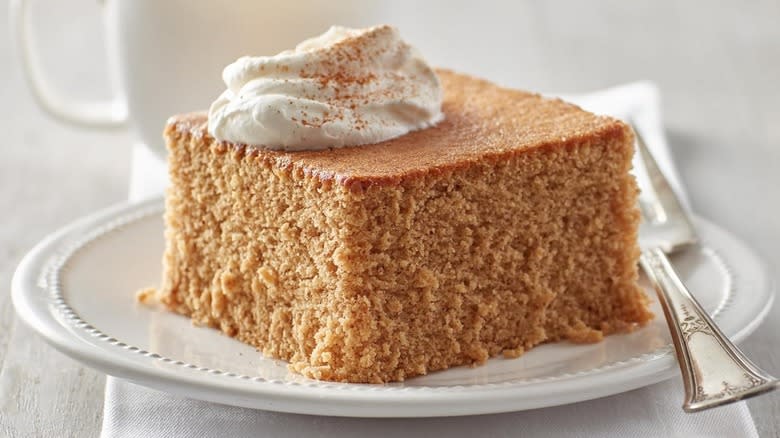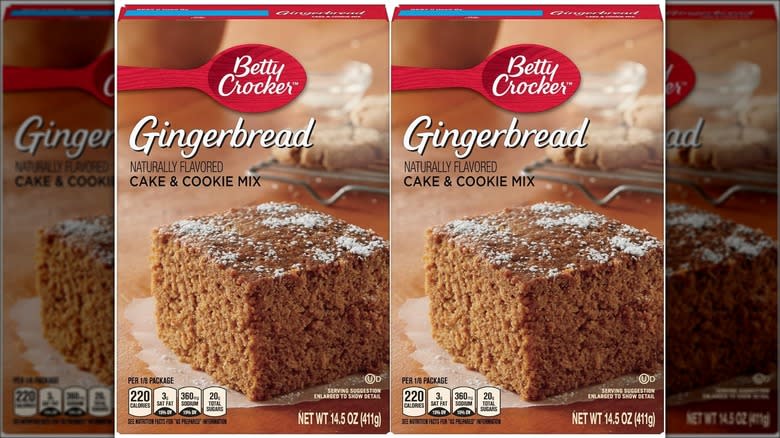How A Molasses Surplus Led To The Invention Of Boxed Cake Mix

While today's sweetener of choice might be white sugar, followed by trendier ingredients such as maple syrup and agave, back in the 19th and early 20th centuries molasses was far more common. Popular though it was back in the day, it's always possible to have too much of a good thing, and in some cases, it can be downright tragic — in one of history's more bizarre food disasters, a 1919 flood of molasses killed 21 Bostonians. A surplus of molasses a decade later, however, had a far more felicitous result as it led to the creation of boxed cake mix.
A company called P. Duff and Sons patented the first cake mix in 1930: a gingerbread cake that used equal amounts of dried molasses and flour. Apparently, the ability to dry the molasses was the big breakthrough that led to the possibility of such a mix in the first place, seeing as how flour is already dry. While some of the earliest mixes were also made with dried eggs, by the mid-30s P. Duff realized that home cooks preferred to add their own eggs. The company also branched out a bit farther than gingerbread, offering fruit cake, spice cake, and even devil's food cake mixes, although it's unclear if the last-named was also sweetened with molasses.
Read more: The Most Useless Cooking Utensils, According To Chefs
Cake Mix Didn't Really Catch On Until There Was An Abundance Of Flour

You might expect that such a convenient new product would have really caught on with 1930s householders, and to some extent that must have been true since P. Duff was soon joined by other cake mix manufacturers including Continental Mills, The Doughnut Corporation, Hills Brothers, Occident, Ward Baking Company, and the still-familiar Pillsbury. Still, there were a few bugs yet to be worked out regarding packaging and spoilage prevention, and when World War II came along that put a crimp in cake mix production since flour was in short supply.
After the war, however, companies ramped up their efforts to push boxed cake mix, including such cutting-edge advertising techniques as using brightly-colored packaging meant to catch the consumer's eye. Standard-sized baking pans were also developed with an eye to boxed cake baking, but what really put cake mix over the top was the availability of frosting mixes and canned frostings as well as numerous glossy ads showing how cake mix + frosting could be transformed into decorative confections that were as much a feast for the eyes as they were for the stomach.
If you're wondering whether cake mix still dances with the ingredient that brought it to the ball, though, the answer is ... sort of. Molasses is still used in gingerbread cake mixes, but a list of top-selling cake mixes complied by food database Nutritionix shows no gingerbread cake mixes ranked among the top 50.
Read the original article on Mashed

